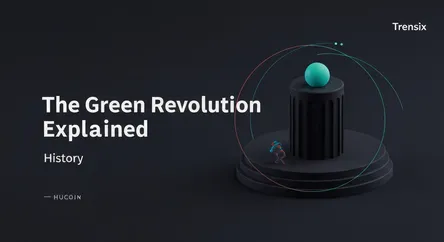History
The Green Revolution Explained

An overview of the Green Revolution, the mid-20th century movement that dramatically increased agricultural production and averted widespread famine.
What is it?
The Green Revolution refers to a period of technological transfer and research initiatives that occurred between the 1940s and late 1960s, dramatically increasing agricultural production worldwide. This movement involved the development of high-yielding varieties (HYVs) of cereals, particularly dwarf wheat and rice, and the adoption of a package of modern agricultural practices. These practices included the extensive use of chemical fertilizers, pesticides, and controlled irrigation to maximize crop output. Spearheaded by scientists like Norman Borlaug, often called the "Father of the Green Revolution," these innovations were first successful in Mexico and later adopted in regions like India and Southeast Asia, transforming global food supplies.
Why is it trending?
The Green Revolution remains a pivotal event in modern history because it is credited with saving over a billion people from starvation and helping to feed a rapidly growing global population. It demonstrated how science and technology could address critical global challenges like famine. However, its legacy is complex and frequently debated, making it a relevant topic today. Discussions often focus on the trade-offs between increased food production and the significant environmental consequences, such as soil degradation, water depletion, and loss of biodiversity from relying on a few crop varieties. Furthermore, its socioeconomic impacts, including the widening gap between large and small-scale farmers, continue to be studied.
How does it affect people?
The Green Revolution had profound and mixed effects on people globally. Positively, it led to a 160% increase in world grain production between 1950 and 1984, making food more abundant and affordable, which helped reduce poverty and infant mortality rates. In India, for example, wheat production grew from 10 million tons in the 1960s to 73 million in 2006. Negatively, the heavy reliance on chemical inputs has led to environmental pollution and soil degradation, impacting the long-term sustainability of farming. Socially, farmers who could afford the new technologies often prospered, while poorer farmers were sometimes displaced, unable to compete. It also led to a dietary shift, with a decline in the cultivation of diverse native crops.